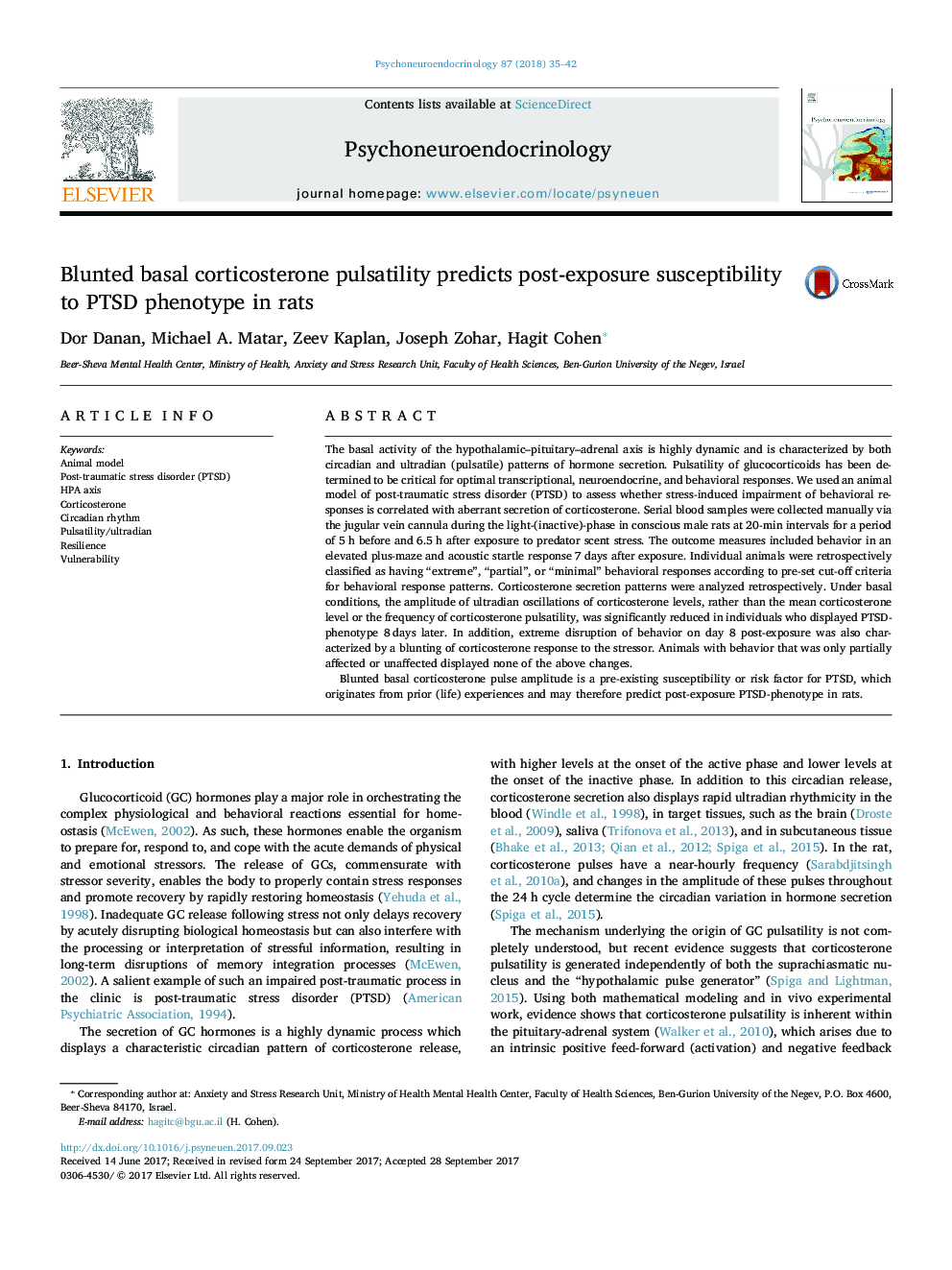| کد مقاله | کد نشریه | سال انتشار | مقاله انگلیسی | نسخه تمام متن |
|---|---|---|---|---|
| 4934146 | 1433956 | 2018 | 8 صفحه PDF | دانلود رایگان |

- Amplitude of basal corticosterone pulsatility was reduced in individuals who displayed PTSD-phenotype 8 days post exposure.
- PTSD-phenotype was characterized by a blunting of corticosterone response to the stressor.
- Amplitude of basal corticosterone pulsatility might well be worthy of study as a variable/factor for PTSD vulnerability.
The basal activity of the hypothalamic-pituitary-adrenal axis is highly dynamic and is characterized by both circadian and ultradian (pulsatile) patterns of hormone secretion. Pulsatility of glucocorticoids has been determined to be critical for optimal transcriptional, neuroendocrine, and behavioral responses. We used an animal model of post-traumatic stress disorder (PTSD) to assess whether stress-induced impairment of behavioral responses is correlated with aberrant secretion of corticosterone. Serial blood samples were collected manually via the jugular vein cannula during the light-(inactive)-phase in conscious male rats at 20-min intervals for a period of 5Â h before and 6.5Â h after exposure to predator scent stress. The outcome measures included behavior in an elevated plus-maze and acoustic startle response 7Â days after exposure. Individual animals were retrospectively classified as having “extreme”, “partial”, or “minimal” behavioral responses according to pre-set cut-off criteria for behavioral response patterns. Corticosterone secretion patterns were analyzed retrospectively. Under basal conditions, the amplitude of ultradian oscillations of corticosterone levels, rather than the mean corticosterone level or the frequency of corticosterone pulsatility, was significantly reduced in individuals who displayed PTSD-phenotype 8Â days later. In addition, extreme disruption of behavior on day 8 post-exposure was also characterized by a blunting of corticosterone response to the stressor. Animals with behavior that was only partially affected or unaffected displayed none of the above changes.Blunted basal corticosterone pulse amplitude is a pre-existing susceptibility or risk factor for PTSD, which originates from prior (life) experiences and may therefore predict post-exposure PTSD-phenotype in rats.
Journal: Psychoneuroendocrinology - Volume 87, January 2018, Pages 35-42